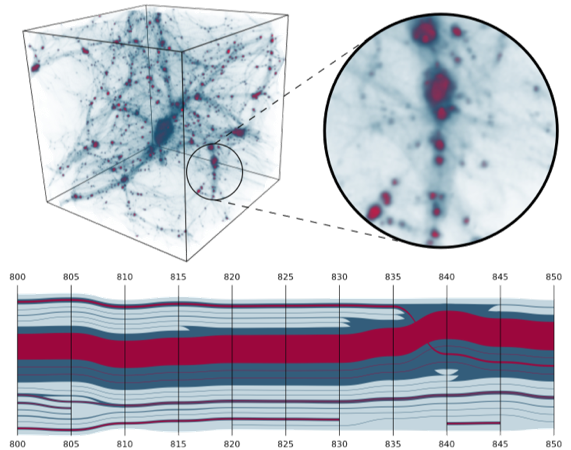
Fig. 1: Tracking halos for three density thresholds (red, blue, light blue) in cosmology simulation.
A new technique makes it easier to see how features in simulations are related and how they evolve.
Analyzing simulations often depends on understanding how features based on thresholds (e.g., galaxies in cosmology) and their properties change over time. Our new technique [1] makes it easier to understand relationship between features at multiple thresholds.
Tracking graphs are a well established tool to visualize the evolution of components and their properties over time, i.e., when components appear, disappear, merge, and split. However, tracking graphs are limited to a single level threshold and the graphs may vary substantially even under small changes to the threshold. To examine the evolution of features for varying levels, users have to compare multiple tracking graphs without a direct visual link between them. We propose a novel, interactive, nested graph visualization based on the fact that the tracked superlevel set components for different levels are related to each other through their nesting hierarchy. This approach allows us to set multiple tracking graphs in context to each other and enables users to effectively follow the evolution of components for different levels simultaneously. We demonstrate the effectiveness of our approach on datasets from finite pointset methods, computational fluid dynamics, and cosmology simulations.